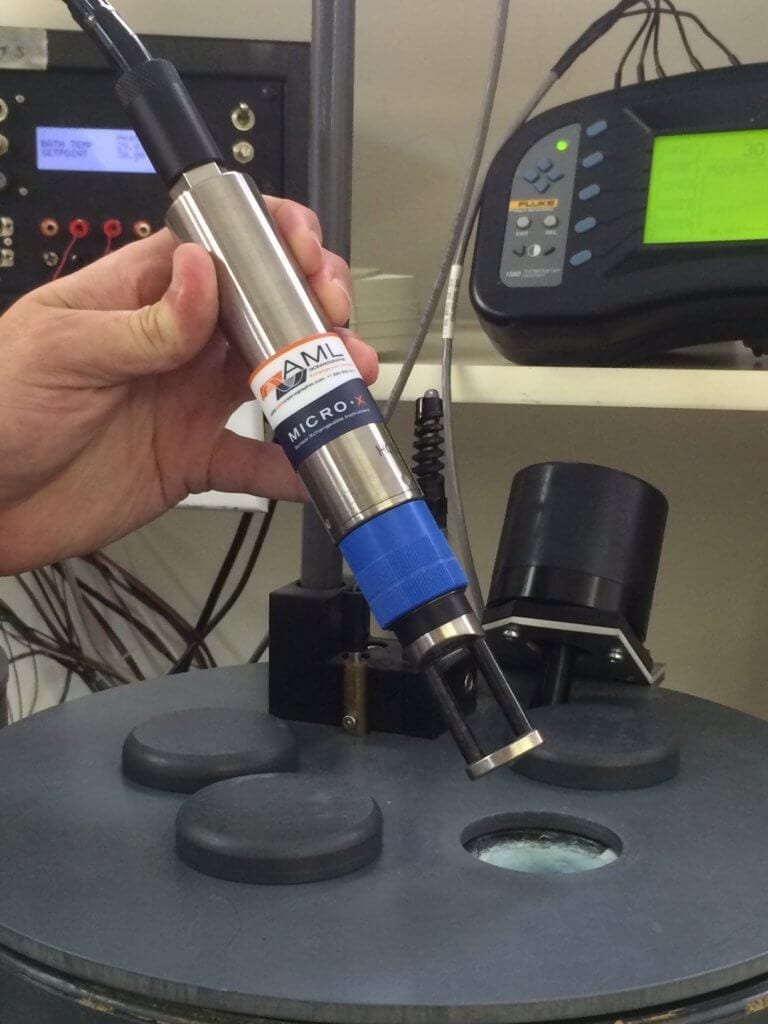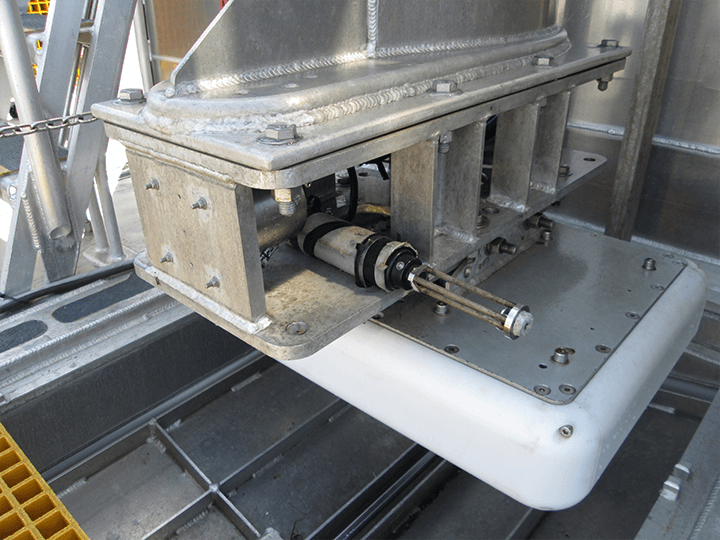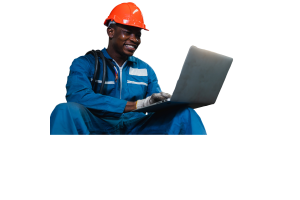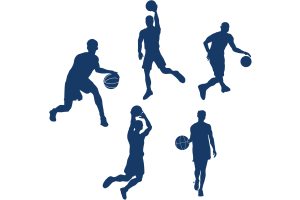Sound Velocity Calibration
Sound speed – often referred to as sound velocity – is defined as the distance travelled divided by elapsed time. In any sound velocity calibration, three factors need to be considered:
- sound speed reference
- measurement of time
- measurement of distance
For sound speed – point 1 – there are two references which can be used for calibrating field instruments. These are the pure water equation of state and the salt water equation of state. The pure water equation of state has an accepted accuracy of 0.02 m/s; the salt water equation has an accepted accuracy of 0.25 m/s. For best accuracy, sound velocimeters must therefore be calibrated to the pure water equation of state.
To achieve a high accuracy sound velocity reference for

calibration purposes, the water conditions must be precisely controlled. Total dissolved solids must be less than 5 ppm. Temperature must be stable and measured to within 0.002 degrees Celsius. The water must be homogenous so that the reference temperature and the temperature at the sound velocity sensor head are identical. This requires extraordinary measures to control heat flow and circulation within the calibration tank.
Time – point 2 – is measured by the sound velocimeter. The accuracy and resolution requirements for this measurement are dependent upon the pathlength and the range of sound velocity to be measured. For AML Oceanographic range of time-of-flight sensors, this varies between xyz and qrs (range for accuracy and range for resolution).
It is impractical – both physically and economically – to measure sensor pathlength to the nanometer resolution that is required for sound velocity measurement. Instead, we use the known variables – expected sound velocity under specific conditions and time constants – to calibrate the instrument to produce the correct sound velocity. In essence, pathlength is turned into a calibration equation variable.
Sound velocity sensors are calibrated over the entire temperature range of their specification statement. Sensor materials are chosen based upon detailed material science analyses of multi-material relationships as pressure and temperature change.
Sound velocity sensors are calibrated over the entire temperature range of their specification statement. Sensor materials are chosen based upon detailed material science analyses of multi-material relationships as pressure and temperature change.
What is the difference between precision and accuracy?
Many vendors of oceanographic instrumentation refer to accuracy and precision interchangeably. They are not interchangeable. In effect, accuracy refers to how well a sensor performs against a known third party standard. For example, a temperature sensor may be +/- 0.001 C, as compared to a Black Stack themistor module. Precision refers to the repeatability of the readings of a given sensor. A sensor is precise when it repeatedly provides the same reading, regardless of how accurate that reading is.
A good analogy is a dart board. The thrower of darts is accurate when he or she is able to reach the target, the bulls-eye. He or she is precise if, having thrown three darts, all three land in the same location, irrespective of whether or not that location is the bulls-eye.

How often should I recalibrate my sound velocity sensors?
AML Oceanographic sound velocity sensors are factory calibrated at time of manufacture. Sound velocity sensors operate to specification for a period of 12 months, although factors such as proper care, maintenance regime, frequency of use, and deployment environment can have an impact on calibration longevity. In general, we recommend sensor recalibration on an annual basis. Recalibration of sound velocity sensors must be done at the factory or at an authorized service centre.
Many consumers of hydrographic survey services have more stringent requirements in terms of calibration or recalibration of sound velocity measurement devices. For one such example, see page 69 of the NOAA guidelines. Other international organizations – for example, the Canadian, British and Australian hydrographic survey departments – tend towards similar requirements.
What impacts a sound velocity calibration?
Time-of-flight sound velocity sensors are generally more durable and shock resistant than CTDs. CTDs use fragile glass components. In contrast, sound velocity sensors – particularly the latest generation composite sensors – are largely immune to impact, shock, and vibration.
On older invar sensors (shown at below), corrosion of the rods on an invar sensor will not affect the calibration of a sound velocity sensor. Corrosion migrating to the interface between the invar rods and the stainless steel sensor faces at either end of the rods can have an impact on a sensor’s calibrated path length. Similarly, sound velocimeters show the impact of corrosion less readily than CTDs. A CTD that has experienced corrosion on the conductivity sensor electrodes will perform much more poorly than a sound velocimeter with invar rod corrosion.












